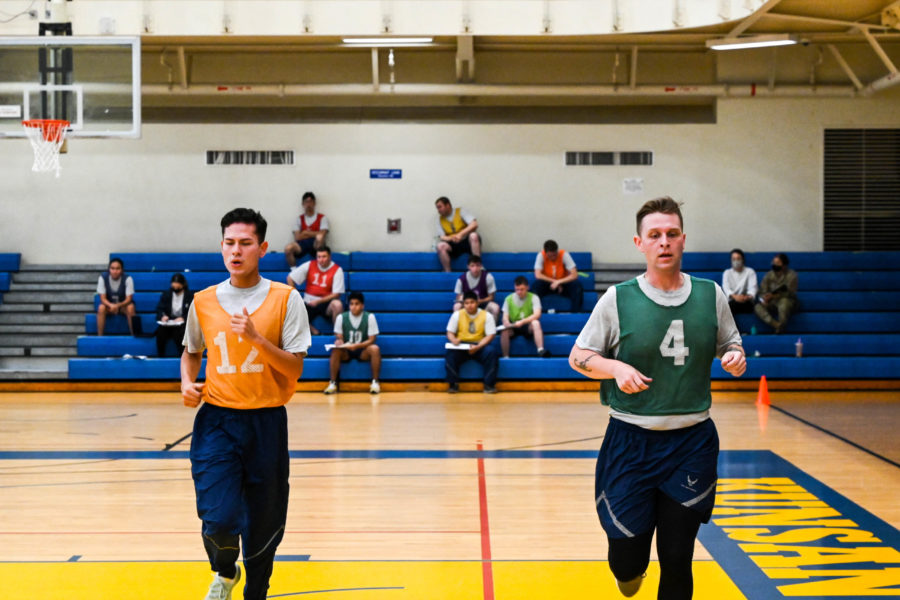At least for now, Airmen won’t be able to walk the walk for their PT tests.
The Air Force released updated scoring charts for its revamped physical fitness test Nov. 12, with alternate exercises offered for the cardio, endurance, and strength portions of the test starting Jan. 1, 2022. Missing, however, was the 1-mile walk that the service had said it would implement as a measure of aerobic fitness.
In a Facebook post, Chief Master Sgt. of the Air Force JoAnne S. Bass wrote that the walk was removed “until we are able to standardize the VO2 measurement equipment across every installation. We will continue working the logistics and evolution in the meantime.”
Air Force leaders had previously said that a lack of equipment and facilities across every base made alternate exercises such as swimming, biking, and rowing untenable. The plan had been to use Airmen age, weight, and heart rate at completion of the walk to determine their aerobic capacity, sometimes called VO2 max.
While the walk is out, the other alternate exercises previewed and tested on a cross-section of the force in recent months are all included:
- A 20-meter high-aerobic multi-shuttle run (HAMR) for the cardio portion.
- Hand-release pushups for the strength portion.
- Cross-leg reverse crunches or forearm planks for the endurance portion.
The traditional 1.5-mile run, pushups, and sit-ups are still available as well, and their scoring charts remain unchanged from the update released in May, when the Air Force shifted the PT test to lower minimum requirements across every age category for both men and women and also implemented five-year cohorts instead of 10 years.
The HAMR’s point total is based on the number of times an Airman can sprint 20 meters to the tempo of a progressively faster recorded beep. The third consecutive failure to cross the 20-meter line before the beep terminates the test.
For male Airmen, the minimum number of shuttles required ranges anywhere from 10 for those over 60 years old to 36 for those under 25. The maximums are 71 and 100 or more, respectively. For female Airmen, the minimums go from one for those over 60 to 22 for those under 25. The maximum scores range from 48 to 83.
Hand-release pushups are scored by how many an Airman can do in two minutes. For men, the minimums range across age groups from 10 for the oldest group to 15 for the youngest group, and the maximums from 30 to 40 or more. For women, the minimums go from one to six, with the maximums going from 24 to 40.
Cross-leg reverse crunches are also scored in a two-minute timeframe. Men under 25 will have to complete at least 21 and up to 49, while men over 60 will have to do at least seven and up to 35. Women under 25 will be scored on any total from 11 to 47, while women over 60 will need to do at least five and a maximum of 32.
Forearm planks will be scored based on how long an Airman can hold the pose. The lowest minimum time scored across age groups for men is 25 seconds, and the maximum time is 3:35. For women, the lowest requirement is 15 seconds for those over 60, and the highest maximum requirement is 3:30, for those under 25.
“While testing these components at various installations, we received a large amount of positive feedback,” Lt. Gen. Brian T. Kelly, deputy chief of staff for manpower, personnel, and services, said in a statement. “The changes to the physical fitness assessments reflect what we learned and our desire to provide Airmen with additional flexibility in maintaining fitness standards.”
In order to pass the PT test, Airmen have to score 75 total points while hitting the minimum requirements in all three categories. The cardio phase is worth a maximum of 60 points, and the strength and endurance phases are worth a maximum of 20 each.
As previously announced, the waist measurement is no longer part of the test, but Defense Department policy requires the services to measure body composition. The Air Force surgeon general has determined to use a height-to-weight ratio to fulfill that requirement and will be announcing further guidance “in the coming months,” the service said in a press release.
